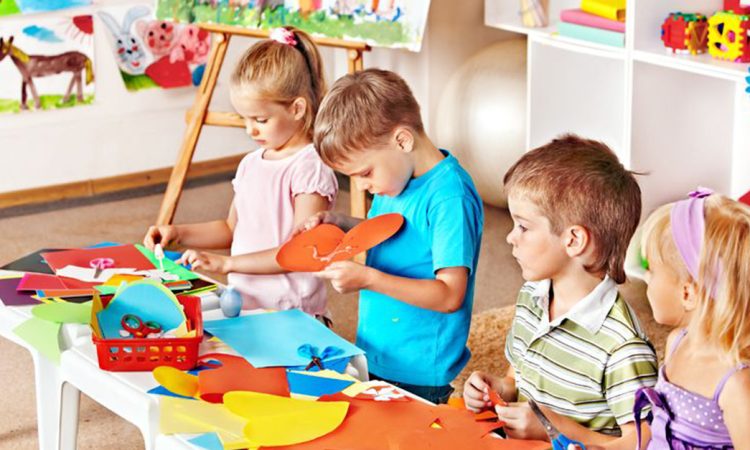
Creativity is a fundamental skill that helps children explore the world, solve problems, and express themselves in unique ways. Encouraging creative thinking from an early age fosters cognitive flexibility, confidence, and innovation.
Whether through art, music, storytelling, or imaginative play, there are countless ways to nurture creativity in children. Let’s go over some of the best strategies to help kids develop their creative potential.
Encourage Open-Ended Play
Open-ended play allows children to explore ideas without limitations, encouraging them to think outside the box. Activities like building with blocks, playing with dolls, or engaging in pretend play allow kids to create their own stories and solutions. Unlike structured activities, open-ended play gives them the freedom to experiment, make mistakes, and learn through trial and error.
Providing simple materials like cardboard boxes, clay, or fabric scraps can spark the imagination. When children are not given a specific outcome to achieve, they come up with their creative approaches. This type of play helps build problem-solving skills and adaptability, which are crucial for lifelong learning.
Choose the Right Childcare Institution
The right educational environment plays a critical role in fostering a child’s creativity. When selecting a childcare institution, look for programs that incorporate art, music, storytelling, and hands-on learning into their curriculum. A school that values creativity will provide diverse experiences that encourage children to explore and express themselves freely.
A creative childcare setting prioritizes play-based learning and allows students to work on projects at their own pace. It encourages teachers to be facilitators rather than strict instructors, giving kids the confidence to try new things. Look for schools that promote curiosity, critical thinking, and innovation to ensure your child develops essential creative skills.
Provide a Variety of Art Supplies
Art is a powerful tool for creative expression. Giving children access to various art supplies such as colored pencils, paint, clay, and collage materials enables them to create freely. The process of making art, rather than the final product, is what nurtures creativity.
Encourage kids to mix different mediums and experiment with textures. Avoid directing them too much, let them decide what they want to create. When children feel free to express themselves, they develop confidence in their ideas and learn to appreciate originality.
Read and Tell Stories Together
Storytelling is an excellent way to stimulate imagination. Reading books introduces children to new worlds, characters, and perspectives while telling their own stories enhances language skills and creative thinking. Asking questions like “What do you think happens next?” or “How would you change the ending?” helps develop storytelling abilities.
Encourage kids to create their own stories using drawings, puppets, or even digital storytelling apps. The more they engage with narratives, the better they become at thinking creatively and structuring ideas. Storytelling fosters not just creativity but also empathy and communication skills.
Encourage Outdoor Exploration
Nature is a natural source of inspiration. Spending time outdoors allows kids to observe patterns, colors, and textures, sparking curiosity and creative thinking. Whether it’s collecting leaves, building forts, or observing animals, outdoor exploration engages the senses and fosters problem-solving.
Unstructured outdoor play also allows children to experiment and take risks. They can invent games, create imaginary worlds, and interact with nature in new ways. These experiences build resilience and adaptability, both of which are essential for creativity.
Limit Screen Time
While technology can be educational, too much screen time can limit opportunities for creative exploration. Encourage kids to engage in hands-on activities like building models, gardening, or crafting. Physical engagement helps them understand concepts more deeply than passive consumption of digital content.
Board games, puzzles, and DIY projects are great alternatives to screen time. They not only enhance creativity but also improve concentration, patience, and collaboration. By providing children with interactive, real-world experiences, you help them develop critical thinking and innovation skills.
Support Their Interests and Passions
Children’s creativity flourishes when they are engaged in activities they love. Pay attention to their interests, whether it’s painting, dancing, science experiments, or playing music. Providing opportunities to explore these passions will help them refine their skills and build confidence.
Encouraging kids to dive deep into their favorite hobbies allows them to experience mastery, problem-solving, and persistence. Instead of pushing them into structured lessons, let them explore their interests in their own way. Passion-driven creativity leads to greater motivation and self-expression.
Create a Safe Space for Creative Risk-Taking
Fear of failure can block creativity. Kids need to feel safe taking risks and making mistakes in their creative endeavors. Celebrate their efforts rather than just the results, and encourage them to try new things without fear of being wrong.
Providing a supportive environment means allowing children to think freely, question ideas, and experiment with different solutions. When they know their ideas are valued, they will be more willing to take creative risks and develop confidence in their abilities.
All in all
Helping kids grow their creativity is one of the best gifts parents and educators can offer, providing a foundation for lifelong innovation. Creativity is not just about artistic expression – it’s a skill that helps children navigate challenges, think critically, and develop a unique perspective on the world. Nurturing creativity from a young age ensures that kids grow into confident, adaptable, and imaginative individuals.




